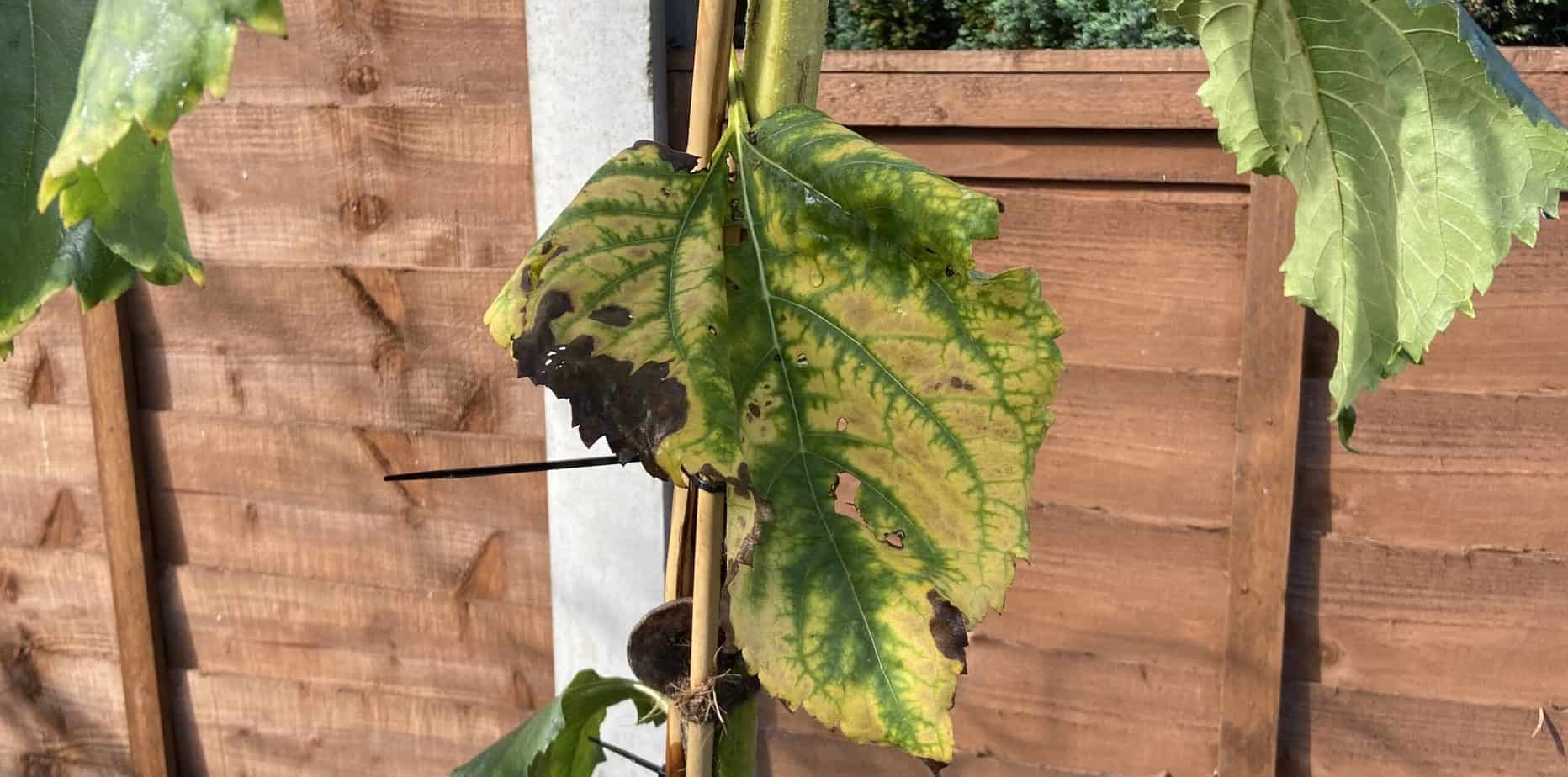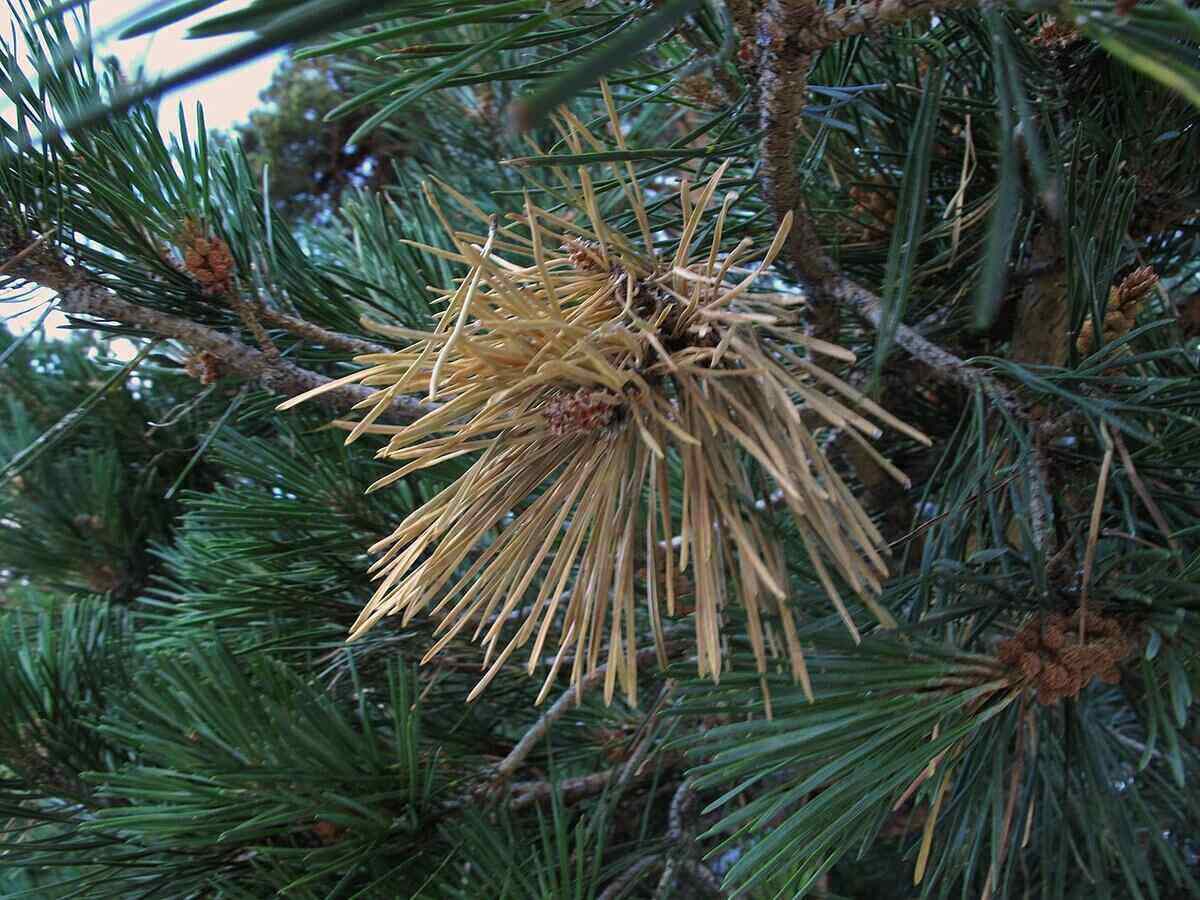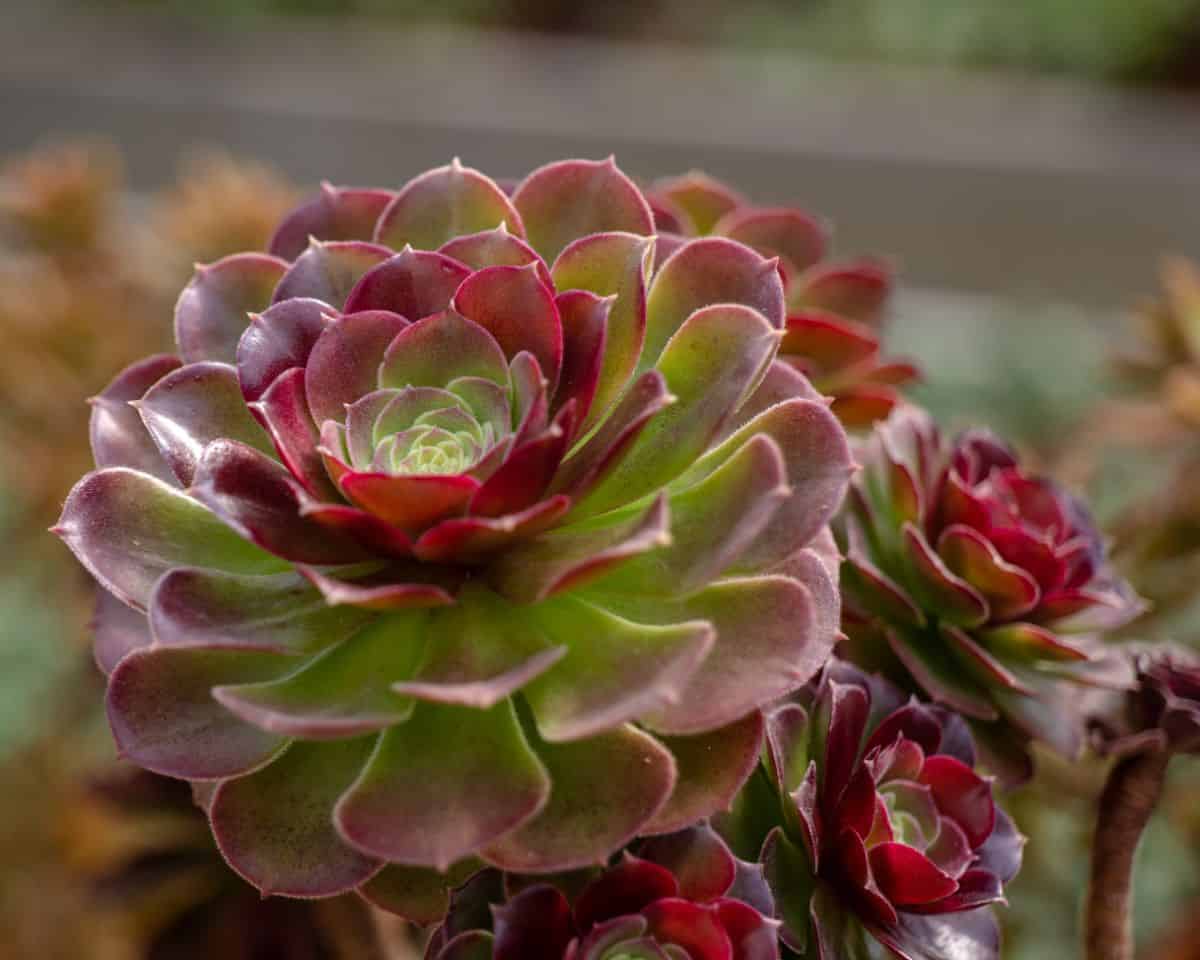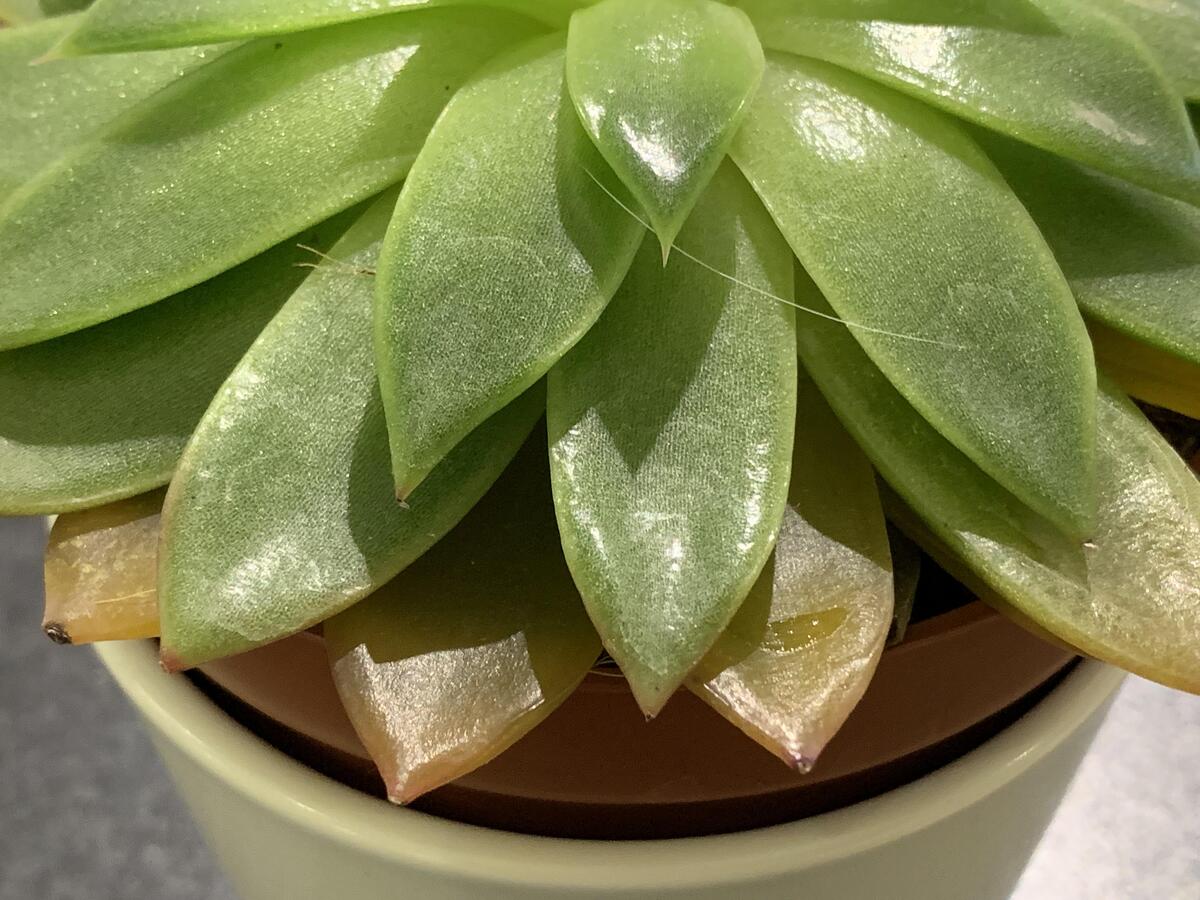Home>Types of Gardening>Ornamental Gardening>Why Is My Bonsai Tree Turning Brown


Ornamental Gardening
Why Is My Bonsai Tree Turning Brown
Modified: January 22, 2024
Discover why your bonsai tree is turning brown and learn how to revive it. Expert tips for maintaining healthy ornamental gardens.
(Many of the links in this article redirect to a specific reviewed product. Your purchase of these products through affiliate links helps to generate commission for Chicagolandgardening.com, at no extra cost. Learn more)
Table of Contents
Introduction
Introduction
Bonsai trees are revered for their timeless beauty and the sense of tranquility they bring to any space. These miniature marvels captivate enthusiasts with their intricate designs and the serene ambiance they evoke. However, as with any living organism, bonsai trees are susceptible to various issues that can affect their health and appearance. One common concern that often troubles bonsai enthusiasts is the browning of their cherished trees. Witnessing a once vibrant and lush bonsai turning brown can be disheartening, prompting a quest to understand and remedy this issue.
The phenomenon of a bonsai tree turning brown can stem from a multitude of factors, ranging from environmental influences to care-related oversights. By delving into the potential causes of browning, enthusiasts can gain valuable insights into preserving the vitality and allure of their bonsai trees. This comprehensive guide aims to unravel the mysteries behind browning bonsai trees, shedding light on the diverse elements that may contribute to this phenomenon. From environmental conditions and watering practices to soil health and pest invasions, each aspect will be explored to equip bonsai aficionados with the knowledge needed to nurture thriving, verdant bonsai specimens.
Throughout this exploration, practical remedies and preventive measures will be presented to empower bonsai enthusiasts in their endeavors to restore and maintain the resplendence of their cherished trees. By unraveling the intricacies of browning bonsai trees and offering actionable solutions, this guide endeavors to serve as a beacon of guidance for those seeking to rejuvenate their beloved bonsai specimens. Let us embark on this enlightening journey to comprehend the causes of browning bonsai trees and discover the means to preserve their timeless allure.
Understanding the Causes of Browning
When a bonsai tree begins to exhibit signs of browning, it serves as a visual indicator of underlying issues that warrant attention. Understanding the potential causes of this phenomenon is crucial in formulating effective strategies to address and mitigate the factors contributing to the browning of bonsai trees.
Several environmental factors can play a pivotal role in triggering the browning of bonsai trees. Exposure to extreme temperatures, whether excessively hot or cold, can exert stress on these delicate specimens, leading to foliage discoloration. Inadequate sunlight or excessive exposure to direct sunlight without ample protection can also result in browning, underscoring the significance of providing optimal light conditions for the well-being of bonsai trees.
Watering practices are another influential determinant of bonsai health, and deviations from the ideal watering regimen can precipitate browning. Both overwatering and underwatering can manifest as browning foliage, underscoring the delicate balance required in maintaining appropriate soil moisture levels for bonsai trees. Soil composition and quality are intrinsically linked to the health of bonsai trees, with suboptimal soil conditions potentially contributing to browning. Compacted or nutrient-deficient soil can impede the proper development of bonsai trees, culminating in visible signs of distress such as browning leaves and stunted growth.
Pests and diseases pose significant threats to the well-being of bonsai trees, with infestations and infections often manifesting through symptoms such as browning foliage. From aphids and spider mites to fungal diseases, the presence of these adversaries can precipitate the decline of bonsai trees, necessitating prompt intervention to thwart their detrimental impact.
Improper pruning practices can also instigate browning in bonsai trees, as haphazard or excessive pruning can compromise the tree’s vitality and disrupt its natural growth patterns. By comprehending the multifaceted causes of browning in bonsai trees, enthusiasts can proactively address these factors to safeguard the health and aesthetics of their cherished specimens.
Environmental Factors
Environmental factors wield a profound influence on the well-being of bonsai trees, and deviations from the optimal conditions can precipitate the browning of foliage. Temperature fluctuations represent a pivotal environmental consideration, with extreme heat or cold exerting stress on bonsai trees, leading to visible signs of distress such as browning leaves. It is imperative to shield bonsai trees from harsh weather conditions, providing adequate protection during periods of intense heat or cold to mitigate the risk of foliage discoloration.
Light exposure is another critical environmental factor that can impact the health and vibrancy of bonsai trees. Inadequate sunlight or excessive exposure to direct sunlight without sufficient protection can result in browning foliage, highlighting the importance of striking a delicate balance in providing optimal light conditions. Positioning bonsai trees in locations that offer the right balance of sunlight and shade is essential to prevent the detrimental effects of light-related stress.
Air quality and circulation also play a role in the well-being of bonsai trees, with stagnant or polluted air potentially impeding their growth and vitality. Adequate ventilation and ensuring that bonsai trees are not subjected to prolonged exposure to pollutants can help mitigate the risk of browning foliage due to compromised air quality.
By comprehending the impact of environmental factors on bonsai trees, enthusiasts can proactively create conducive conditions to support the health and vibrancy of these cherished specimens, reducing the likelihood of browning and fostering an environment where bonsai trees can thrive.
Watering Issues
Watering practices are pivotal in preserving the health and vitality of bonsai trees, and deviations from the ideal watering regimen can precipitate the browning of foliage. Both overwatering and underwatering can manifest as browning leaves, underscoring the delicate balance required to maintain optimal soil moisture levels for bonsai trees.
Overwatering can lead to waterlogged soil, impeding the circulation of oxygen to the roots and fostering conditions conducive to root rot. As a result, the browning of foliage may ensue as the roots struggle to function effectively in waterlogged soil, impeding the uptake of essential nutrients and water. Conversely, underwatering can deprive bonsai trees of vital moisture, causing stress and prompting the foliage to turn brown as a visible indicator of distress.
It is imperative for bonsai enthusiasts to ascertain the specific watering needs of their tree species and adjust their watering practices accordingly. Factors such as the type of soil, climate, and the individual requirements of each bonsai species should be considered when formulating an appropriate watering regimen. Regular monitoring of soil moisture levels and the adoption of watering techniques that promote even moisture distribution can help mitigate the risk of browning foliage due to watering issues.
By cultivating a nuanced understanding of the watering needs of bonsai trees and implementing judicious watering practices, enthusiasts can safeguard their cherished specimens from the perils of browning foliage, nurturing thriving and verdant bonsai trees.
Soil Problems
The composition and quality of the soil in which bonsai trees are cultivated play a pivotal role in their overall health and vigor. Soil problems can significantly contribute to the browning of foliage, underscoring the imperative of maintaining optimal soil conditions to support the well-being of bonsai trees.
Compacted soil can impede the aeration and drainage essential for the healthy development of bonsai trees, leading to stress and potential browning of foliage. Inadequate aeration can compromise root health, hindering the absorption of nutrients and water, thereby manifesting as browning leaves. Moreover, soil that lacks essential nutrients can undermine the vigor of bonsai trees, culminating in visible signs of distress such as browning foliage and stunted growth.
The pH level of the soil also warrants consideration, as deviations from the suitable range can impact the availability of nutrients to bonsai trees. An imbalanced pH level can impede the uptake of essential nutrients, potentially contributing to the browning of foliage as the trees grapple with nutrient deficiencies.
By ensuring that bonsai trees are cultivated in well-draining, nutrient-rich soil with the appropriate pH level, enthusiasts can mitigate the risk of soil-related problems leading to the browning of foliage. Regular assessment of soil quality and composition, coupled with the implementation of appropriate ameliorative measures, can fortify the foundation upon which thriving and resplendent bonsai trees flourish.
Pests and Diseases
Pests and diseases represent formidable adversaries that can jeopardize the health and vitality of bonsai trees, potentially culminating in the browning of foliage as a visible manifestation of their detrimental impact. From aphids and spider mites to fungal infections, the presence of these afflictions can precipitate distressing symptoms in bonsai trees, necessitating prompt intervention to thwart their deleterious effects.
Aphids, tiny sap-sucking insects, can inflict substantial harm on bonsai trees by draining vital fluids and secreting honeydew, fostering the growth of sooty mold that can obscure leaves and impede photosynthesis. Similarly, spider mites, diminutive arachnids, can wreak havoc on bonsai trees by puncturing leaf cells and extracting their contents, leading to discoloration and desiccation of foliage. The infestation of these pests can prompt the browning of leaves, serving as a poignant indicator of their pernicious presence.
Fungal diseases, such as powdery mildew and root rot, pose additional threats to the well-being of bonsai trees, potentially resulting in the browning of foliage as a consequence of their insidious proliferation. Powdery mildew can manifest as a powdery white coating on leaves, inhibiting their capacity for photosynthesis and impeding the overall health of the tree. Root rot, caused by fungal pathogens, can compromise the functionality of the roots, impeding the uptake of nutrients and water, ultimately leading to the browning of foliage as the tree grapples with the consequences of this malady.
Vigilant monitoring and proactive measures are essential in mitigating the impact of pests and diseases on bonsai trees. Implementing preventive strategies, such as maintaining optimal growing conditions and employing natural predators of pests, can fortify the defenses of bonsai trees against potential infestations. Additionally, swift and targeted interventions, such as the application of horticultural oils or fungicidal treatments, can mitigate the impact of pests and diseases, preserving the verdant allure of bonsai trees and averting the distressing browning of foliage.
Improper Pruning
Pruning is an indispensable aspect of bonsai care, shaping the form and vitality of these miniature marvels. However, improper pruning practices can precipitate the browning of foliage, compromising the health and aesthetics of bonsai trees. Haphazard or excessive pruning can disrupt the natural growth patterns of bonsai trees, impeding their capacity to thrive and manifesting as visible signs of distress such as browning leaves.
Excessive pruning, characterized by the indiscriminate removal of foliage and branches, can diminish the tree’s capacity for photosynthesis and nutrient absorption, leading to stress and potential browning of foliage. The depletion of essential foliage can disrupt the delicate balance of the tree, impeding its ability to sustain its vigor and resilience, thereby precipitating the browning of leaves as a poignant indication of the adverse effects of excessive pruning.
Conversely, improper pruning techniques, such as using blunt or unsterilized tools, can leave the tree vulnerable to infections and infestations, further exacerbating the risk of browning foliage. Wounding caused by negligent pruning practices can compromise the tree’s defense mechanisms, rendering it susceptible to the pernicious impact of pests and diseases, potentially leading to the distressing discoloration of foliage.
By cultivating a nuanced understanding of proper pruning techniques and exercising judicious pruning practices, bonsai enthusiasts can safeguard their cherished specimens from the perils of improper pruning. Adhering to the principles of selective and strategic pruning, coupled with the utilization of sharp and sterilized tools, can preserve the vitality and allure of bonsai trees, averting the dismaying browning of foliage and nurturing thriving, resplendent specimens.
Remedies for Brown Bonsai Trees
Addressing the issue of browning foliage in bonsai trees necessitates a multifaceted approach that encompasses attentive care, remedial measures, and a commitment to restoring the vigor and allure of these cherished specimens. By implementing targeted remedies, enthusiasts can endeavor to rejuvenate brown bonsai trees, fostering their resilience and revitalizing their aesthetic appeal.
One pivotal remedial measure involves a comprehensive assessment of the environmental conditions to identify and rectify factors contributing to the browning of foliage. Shielding bonsai trees from extreme temperatures, ensuring optimal light exposure, and enhancing air circulation can mitigate environmental stressors, fostering an environment conducive to the recovery of brown bonsai trees.
Adopting judicious watering practices is paramount in remedying the browning of bonsai trees attributable to watering issues. By calibrating the watering regimen to meet the specific needs of each bonsai species and ensuring proper soil moisture levels, enthusiasts can alleviate the stress on brown bonsai trees, nurturing their recovery and vitality.
Addressing soil problems through measures such as repotting in well-draining soil with the appropriate pH level can ameliorate the conditions contributing to the browning of foliage. By fortifying the foundation upon which bonsai trees thrive, enthusiasts can bolster the prospects of recovery and rejuvenation for brown bonsai trees.
Combatting pests and diseases through targeted interventions, such as the application of natural predators of pests or the judicious use of horticultural oils and fungicidal treatments, can thwart the detrimental impact of these adversaries, fostering the restoration of brown bonsai trees to their verdant splendor.
Furthermore, addressing the consequences of improper pruning through meticulous care and strategic pruning practices can contribute to the recovery of brown bonsai trees, enabling them to regain their vitality and visual allure.
By integrating these targeted remedies and demonstrating unwavering dedication to the well-being of brown bonsai trees, enthusiasts can embark on a transformative journey towards rejuvenating these cherished specimens, fostering their resilience and revitalizing their timeless allure.
Conclusion
The browning of bonsai trees serves as a poignant indicator of underlying issues that warrant attention and remediation. By unraveling the multifaceted causes of browning, from environmental influences and watering practices to soil health, pests, diseases, and improper pruning, enthusiasts can gain valuable insights into preserving the vitality and allure of their cherished trees.
Understanding the impact of environmental factors, such as temperature fluctuations, light exposure, and air quality, empowers enthusiasts to create conducive conditions for the thriving of bonsai trees, reducing the likelihood of browning foliage due to environmental stressors.
Adopting judicious watering practices, addressing soil problems, combating pests and diseases, and exercising meticulous care in pruning are pivotal in remedying the browning of bonsai trees, fostering their recovery and revitalization.
By integrating targeted remedies and demonstrating unwavering dedication to the well-being of brown bonsai trees, enthusiasts can embark on a transformative journey towards rejuvenating these cherished specimens, nurturing their resilience and revitalizing their timeless allure.
Embracing the art of bonsai cultivation entails a profound commitment to the well-being of these miniature marvels, and through attentive care and informed interventions, the resplendence of brown bonsai trees can be restored, perpetuating their enduring beauty and captivating allure for generations to come.







